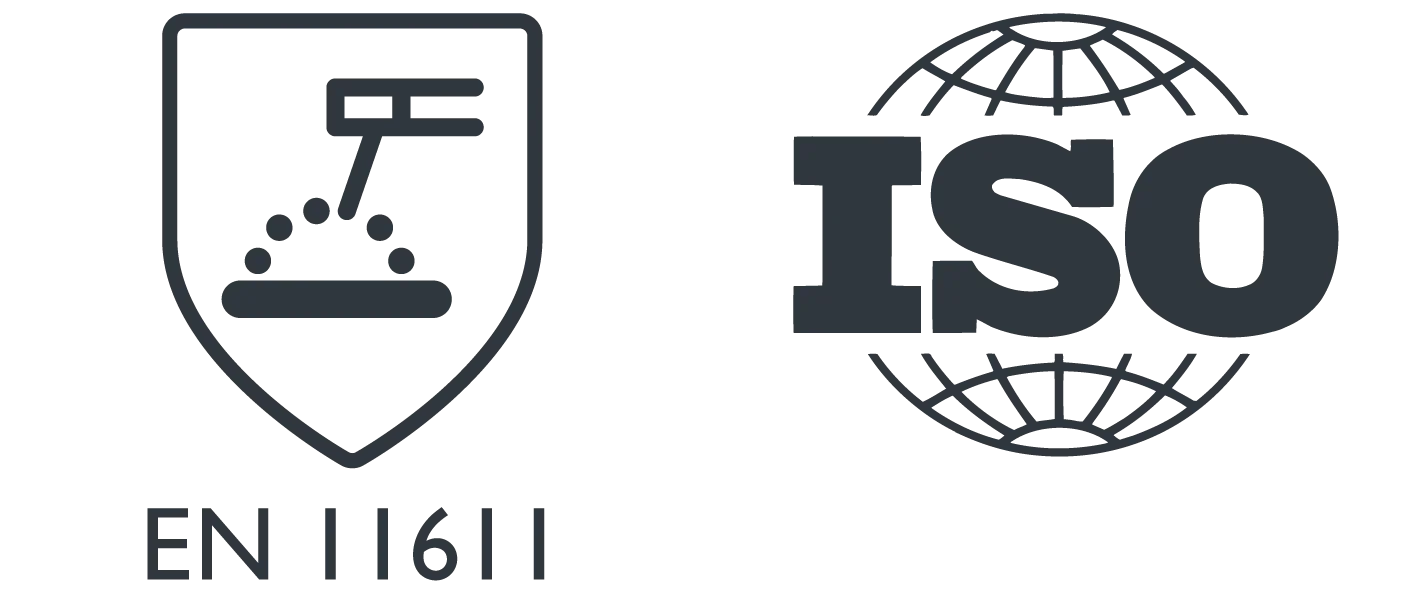EN ISO 11611

Protective clothing for use in welding and related processes
The EN ISO 11611 standard specifies the minimum basic security requirements and test methods for protective clothing and processes related to comparable risks.
This kind of protective clothing is dedicated to protecting the wearer against splashes (small molten metal splashes), short flame contact time, radiant heat from an electric arc used for welding, and related processes. It also minimises the potential for electric shock due to a short circuit (accidental, short-brief contact with electrical conductors at voltages of up to about 100 V).
Sweat, dirt or other contaminants may affect the expected level of protection against accidental, brief contact with live electrical conductors at this voltage.
EN ISO 11611 CERTIFICATION REQUIREMENTS
TEST METHOD
ISO 15025
Protective clothing – Protection against flames – Method of test for limited flame spread.
A1 or A2
ISO 9150
> 15 drops (Class 1)
> 25 drops (Class 2)
ISO 6942
Protective clothing – Protection against heat and fire – Method of test: Evaluation of materials and material assemblies when exposed to a source of radiant heat.
Class 1 – RHTI24 ≥ 7 s
Class 2 – RHTI24 ≥ 16 s
ISO 9185
Protective clothing – Evaluation of resistance of materials to molten metal splashes.
–
EN1149-2
Protective clothing – Electrostatic properties – Part 2: Test method for measurement of the electrical resistance through a material (vertical resistance).
> 105 Ω
ISO 5077
Textiles – Determination of dimensional change in washing and drying.
< 3% woven fabric
< 5% knit fabric
ISO 13934-1
Textiles – Tensile properties of fabrics – Part 1: Determination of maximum force and elongation of maximum force using the strip method.
400 N
ISO 13937-2
Textiles – Tensile properties of fabrics – Part 2: Determination of maximum force using the tear method.
20 N
ISO 13938-1
Textiles – Bursting properties of fabrics – Part 1: Hydraulic method for determination of bursting strength and bursting distension.
minus 100 kPa (for a test area of 50 cm2)
or 200 kPa (for a test area of 7 cm2)
ISO 13938-2
Textiles – Bursting properties of fabrics – Part 2: Pneumatic method for determination of bursting strength and bursting distension.
minus 100 kPa (for a test area of 50 cm2)
or 200 kPa (for a test area of 7 cm2)















